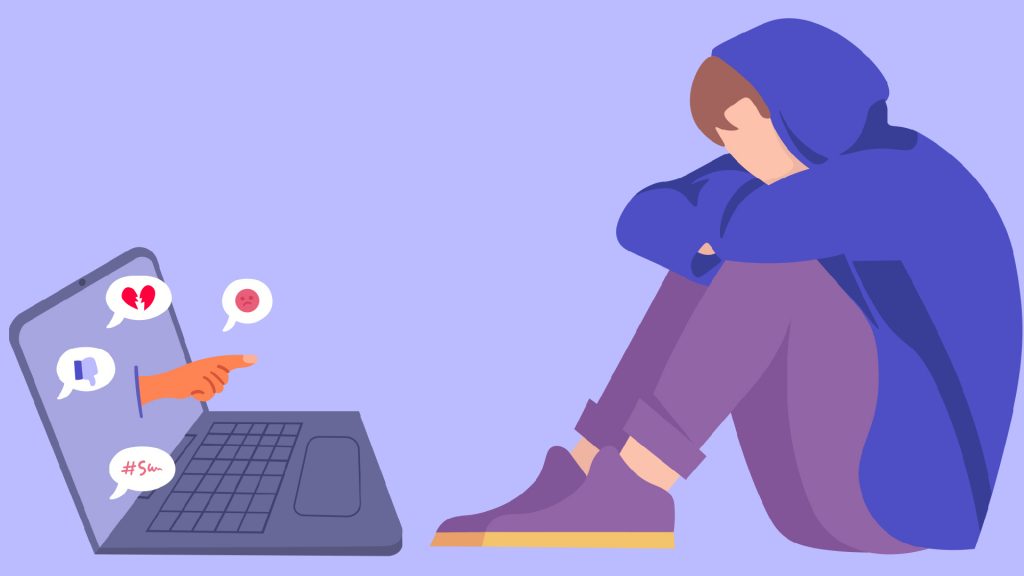# Debate 1 & 2
# Debate 1 (Technology in the classroom enhances learning)

Technology has done wonders in our lives. It has provided us with so many fascinating things and opportunities that one would never have thought about. It has made our lives so easy and comfortable and has become part of our life. As much as we want, we can not live without it. As big as a computer and as small as the chip in the same computer. It is a boon to us. But does this always benefits us? Is it effective in all phases of life? Well, I was of the view that it does. And in the pandemic, I observed how important it is to be tech-savvy. Being an online teacher for two years made me realize that even education is so dependent upon technology and is in need of the teaching-learning environment as well.
Being a part of ‘The Great EdTech Debate’ under my EC&I830 course, I got the chance to listen to some of the great points made by my peers. Initially, I was of the view that Technology enhances learning as it has been a part of my teaching currier throughout. Being able to use technology in my class has boosted my teaching abilities. I had ample resources online to look at when I have to refer about anything in particular to my students. The endless ocean of information allowed me to look for resources that can benefit my students and enhance their learning. It helped me to make them more engaged in the classroom. And so when during the initial voting, my vote has to go to the agree side only, just like many others. But will I be on the same page at the end also? Well…. who knows?
Team in Favor
The agree side made some very crucial points such as:

- Access to Information & Resources: Technology has transformed the way information is accessed and transferred. For personal communications, there are blogs, Wikipedia, and instant messaging to communicate. New software, like Blackboard and podcasting, impacts the way instructors interact with classes. The ample amount of resources to teach with and Information to share has changed and enhanced the whole process of teaching and learning.
- Increased Engagement: Technology helps in keeping the kids more engaged and enhanced their learning as well. The learning has been gamified to make it more interesting and fun. Watching videos that are not just enjoyable but teach values as well. Personalized activities, online quizzes, online meets, and whatnot. They all increase the engagement of kids and thereby make them more involved.
- Skills for success: With the help of technology, a variety of skills can be learned. Providing students with opportunities to work on challenging tools and applications, leads to the development of critical thinking. Online platforms can help them develop creative skills that they may pursue in the future, such as music, videos, art, etc.
- Promotes Collaboration and Communication: Technology has led to collaborative learning as students learn to interact with each other more through online platforms, share and comment on each other’s work and analyze it, thereby increasing their critical thinking.
- Restructures Teacher’s Time: It helps in restructuring teachers’ time as one can communicate effectively with parents through calls or e-mails. Also, to provide any information like a sudden holiday or change in class time, one can just send a text message. Making a worksheet online can be used in different classes again and again thus saving time to rewrite everything on blackboards. Having access to various teaching-learning materials online could also save our time and enhance our learning as well.
- Adaptation/Accommodation: One of the best points that were discussed by the agree team was that technology has led to more adaptive learning. Students with any sort of learning difficulty can adapt themselves to normal classroom learning by using technology like hearing aids, Google speech, and so on.
Those were some of the major points discussed which I highly agree with. But will I have the same view after we get to know what the opposition has to say?
Counter Team
So the other team had to oppose the thought that technology enhances learning. Well, not many would disagree with that. Even so, the points made by the opponents were valid, making me wonder: does this gift I talked about really help? Following were the points that were highlighted in the counter debate.

- Distraction: No one can deny the fact that technology has led to a huge amount of distraction among children. Staying on their phones all the time and relying on them has made them away from valuable things in their life. Technology has been a distraction for them not just at home but in their studies as well. It is commonly observed that students have a habit of constantly checking their phones and it can be said that they are addicted to it. They are distracted by an abundance of notifications, so they are unable to focus.
- No real connections: Technology has made students hide behind the screen and hence they feel more comfortable only when they have technological devices with them. This has made them lose real connections and they have started feeling socially awkward. The only thing that is keeping them connected is social media. No real friendship- as there’s a competition of constantly proving themselves and being able to adapt to this fake, artificial world. and thereby leading them to a negative environment.
- Feeling of Isolation: With the increasing technological advancement and a never-ending need for technical knowledge have made everyone shift themselves to an artificial world, leading us to a place where everyone is constantly on their phones or computers. In this technological world, children have started feeling alone and isolated. Because of the busy schedule, parents also don’t have enough time to spend with their kids which is ultimately leading them to become more dependent on the online world.
- Health Issues: There’s no solid proof that using technology, the learning of children has shown any drastic uplift, but it is surely observed that it has led to major health issues amongst children. Reduced physical activities, increased risk of depression, lower wellbeing, weaker eyesight, obesity, tension, and anxiety. At the age where children should be enjoying their lives and learning new things, they are all flanked by all these mental, physical and social problems.
- Inequity: The society has always been partial and inequitable. Different people in different places, in different countries have different priorities. Technology has increased this gap. On one side there are fortunate one’s who have access to all the resources and they can use them for their own advancement while others strive for basic necessities-like food, shelter and basic education.

There will probably never be a conclusion to such debates. In the end, we blame the government for not providing the students with technology that can enhance their learning, as we continue to get points, one after another. When we adapt things, there will always be hazards, but we must guide our students to use the material effectively and refine it for them. While I agree that using technology in the classroom will have some disadvantages, we cannot live without it either. As for Britney, I agree with her. I mean, who wants to write the same thing 26 times when you can photocopy it?
# Debate 2 (Technology has led to a more equitable society)
Technology is inevitable and so is inequality. But is this the Technology that is creating inequality in society? Or is it making our society more equitable? Well, that was what the second topic of our debate was. Has technology led to a more equitable society? The arguments of the teams goes like this.
Agree Team
The agree team gave certain facts that has helped students with disabilities to have more equitable education. Assistive tech has enhanced the learning environment of such students and has made them more self dependent.

Equitable education: There is no denying the fact that technology has led to more equality in education. By the invention of assistive technology, it has surely become easier and convenient for children with disability to help them with their educational needs and have further more made the education system more inclusive.
Access to Education: With the advancement in technology, more students have got access to education. students can learn from the comfort of their homes and at their own pace. With a wide range of internet access, technology has helped a lot of students to learn from a remote locations. Technology is thus being used to increase access to education for people with different social and economic backgrounds globally.
Differentiated Learning: The “Role of Technology in Reimagining School” states that “Technology also makes it easier for teachers to share the work of developing differentiated lessons. If every teacher is teaching two-digit multiplication, one can develop games for skills practice while another creates word problems.” Learning through different sources increases students’ understanding, they are motivated by watching videos and solving quizzes online.
Even so, there are still many cultural and societal obstacles to fair, inclusive, and equal access to education. This issue is global; too many exclusions still block the fundamental right to access education worldwide. While we are moving in the right direction, even with the most advanced technology, we have a long way to go before everyone has access to education throughout their lives.
Disagree Team
Some very strong and important points were highlighted by the disagree team which made us rethink that it whether technology leads to an equitable society?
Inequity Gap: Access to technology has always been a major concern of all the educators. Students with minorities and lower income groups can not afford technological devices. Even if the government provides the devices to them, they do not get parental support at home since parents lack understanding of these devices.
Funding: This is one of the major cause of inequity. The funds provided by different governments globally are not enough to provide all the students with materials needed. This was seen during the Pandemic as well wherein many students were not able to take classes due to unavailability of resources.
Digital Divide: Digital Divide is not just not having access to technology but also how that technology is used. Tablets and smartphones can not replace a computers. Families with multiple kids often face this issue. Also, the students who somehow arrange for devices to use it for education often lack the knowledge of using the devices appropriately as they are not digital natives.

Other than these there are many more factors that lead to this inequity. Lack of teachers’ training, the home learning environment and we can keep counting. All these lead to widening the gap of inequality among students. Even the companies that make online educational materials are profit-driven and so the materials are not made keeping into consideration students from different linguistic and socio-economic groups.
Conclusion
Technology has a lot of disadvantages, so as long as students do not have equal access to these technological devices, it is hard to imagine that society will be equitable. Many students with disabilities benefit from assistive technology, but the technology comes at a cost, and only a few can afford it. In the global context, many developing and underdeveloped countries cannot afford to fund students with basic stationery for their education, let alone technology to enhance learning. Technology is indeed a great tool, but only when it works, or rather when it is available for everyone. Technology, though it is one of the many factors contributing to the increase of inequity in society, is not the only factor that affects inequality in society.
Hi Sushmeet,
I like the way you illustrate the advantages and disadvantages of using technology in education. Same as you, I was 100% agree that technology will enhance learning during the pre-vote, but my position is wavering after the debate and listening to all the disadvantaged points. The feeling of isolation is a huge drawback of using technology, especially during the pandemic. I used to hear my previous classmates (they are all K12 educators) say that it was supposed to be a time that children develop their social skills in school by connecting with other students and making friends, but the pandemic makes all stay at home and take classes online. They don’t have an opportunity to develop their social skills. Students feel isolated by staying at home, and not being able to hang out with their friends. Heavily relying on technology impacts students’ social ability. Great relfection on two sides!
Echo
Hey Echo,
Thanks for your comment. I totally agree that pandemic have left a negative impact on our student’s social skills. In fact I saw that with my kids who came to school after pandemic that how difficult it was for them to connect and interact with their peers. They all have become so dependent on technological conversations that they no longer wanna talk in person. But hopefully they’ll overcome those things and will learn to work collaboratively with technology.
It was well laid out
Hello Sushmeet,
I like how you organized your post by listing the arguments main points! I agree, there needs to be an educational piece about how these adaptations are used by students. I think the benefits outweigh the negatives, but it is good to know these negative so that we can counteract them with other teachings (lessons on mental and physical health, for example). Inequity still seems to be the biggest one to overcome, as you mentioned we often blame governments for not providing access. I liked how Dalton addressed the many barriers of technology inequality in his post as well.
Hey Leah, Thanks for your comment.
It always comes back to the same digital inequality. It is this part that we should focus on more and it is addressed by a lot of educators as well. Nonetheless, technological advancements have enhanced the learning process for students.
Hello
Hi there, I really like how you laid out your post, summarizing both sides of the debate. I don’t dispute the fact that technology is necessary in the classroom. The part I do not agree with though is that technology automatically enhances learning. We know that technology CAN enhance learning, but just because we use technology in the classroom doesn’t mean that we have done everything we can to enhance the learning. I think we need to think of good pedagogy and practices while using technology.
Hey Kelly, Thanks for your comment.
I too agree that there is more a teacher can do in class to enhance learning other than just using technology. Technology is assistance, not a dependency. I think there is a need to revise the curriculum so that we can enhance the learning of students. But there is no denying that technology has improved the way of teaching and learning.
Sushmeet, I liked how you clearly laid out the points made by each side and then shared your personal reflections. I agree that there are good points made on both sides of the debates.
I’ve always felt that technology enhances learning and helps level the playing field. However, it is true that we need to consider that for some, it can widen the gap. I believe strongly in using technology to deepen learning connections, but I believe that we must continue to recognize that technology is a privilege, and until it is a right, we must consider that not everyone is afforded the opportunity to take advantage of this opportunity.
You make my heart blow feshop
The outfit is perfect ? fe acc18 ru
Their team has a wealth of . Savastan0 cc experience and knowledge.
Creating a cozy reading nook can be a wonderful way to unwind. Choose a comfortable chair, add soft blankets and cushions, and surround yourself with your favorite books. Immerse yourself in captivating stories or explore new worlds through literature. The tactile experience of turning pages and the mental escape into fictional realms provide a perfect avenue for relaxation. Enhance the ambiance with soft lighting and perhaps a soothing cup of tea.
Nice work
Nice work
I enjoyed every but of this work
u spelled bit wrong
b